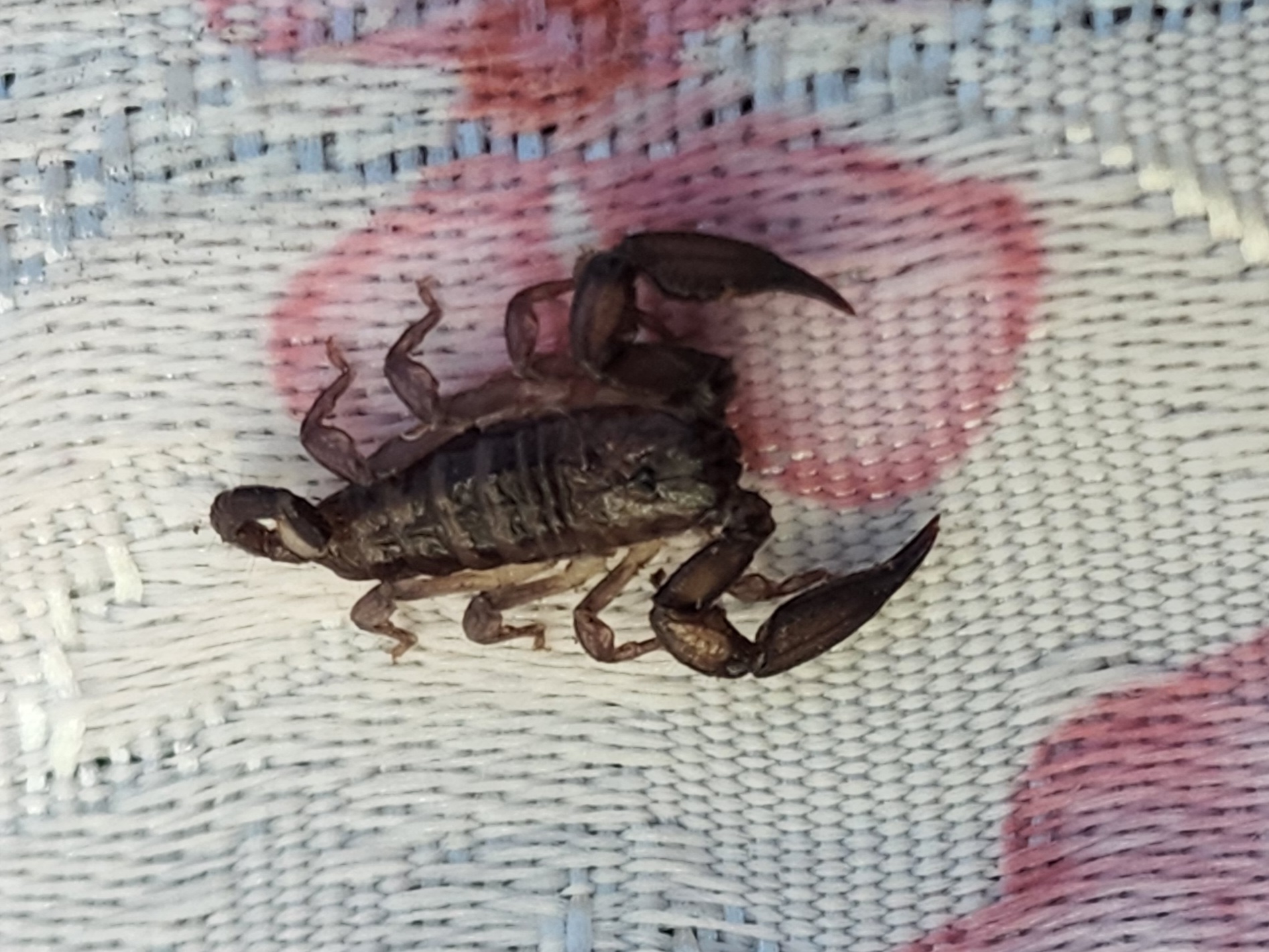Scorpions of the Cook Islands
Who would have thought the Cook Islands has scorpions! Two that have been recorded on the user friendly online ‘Cook Islands Biodiversity Database’ are the Bark scorpion, Tēkōpio Liocheles australasiae, and the Lesser Brown Scorpion, Sōkopio, Isometrus maculatus . Both, very small in size around 15mm in length.
The Bark scorpion is native to the Cook Islands and has been recorded in Pukapuka, Suwarrow, Ma’uke and Aitutaki where it is locally known as the Tēkōpio, a Maori version of the word “scorpion”. Until recently it had not been recorded on Palmerston, though of course the locals have known it was there. he Rat Eradication team currently in Palmerston have now been able to photograph the Bark scorpion present on the island. Palmerston residents have seen the bark scorpion for some time, commonly found outside under objects or whilst husking coconuts. Palmerston residents simply call the scorpion by its common name,e, ‘scorpion’. The Tēkōpio, dark brown in colour, from first glance, can appear quite intimidating with thick forearms. But this minute scorpion is easily missed as it prefers to live in decaying wood or under old leaves, feeding on small insects. Our harmless native Tēkōpio is also found in Asia and the wider Polynesia.
The Lesser brown scorpion, or Sōkopio locally known in Penrhyn was first recorded back in 1985 by Gerald McCormack and more recently this year during the Expedition Tongareva Project around a concrete slab construction site. The Sōkopio is not native but was introduced quite possibly through cargo boats. There have been numerous reports of the Lesser brown scorpion on the Hawaii’an Islands, and if stung can cause intense pain for smaller children. Alex Maretapu who resides in Penrhyn has not heard of any cases of residents being stung by the Sōkopio. This may be because they are more active at night, when using their stinger and claws to feed on insects spiders and millipedes.
There could be a chance the Sōkopio may be in Manihiki and Rakahanga, so do keep an eye out, you could be the first to record this species as present on your home island.
One way of keeping a record of all your exciting biodiversity finds, and getting an identification on species you are unsure about is through a user-friendly app called ‘iNaturalist’. Through iNaturalist you can upload photos of plants, insects, reptiles, birds that you have found, and get experts to provide a possible ID. Further detailed information provided through iNaturalist also allows you to get a better idea of the distribution range of your interesting finds, based on other users' photos.
You never know. You may come across a discovery being the first record of its existence in your home island, in all of the Cook Islands, or even possibly in the world.

